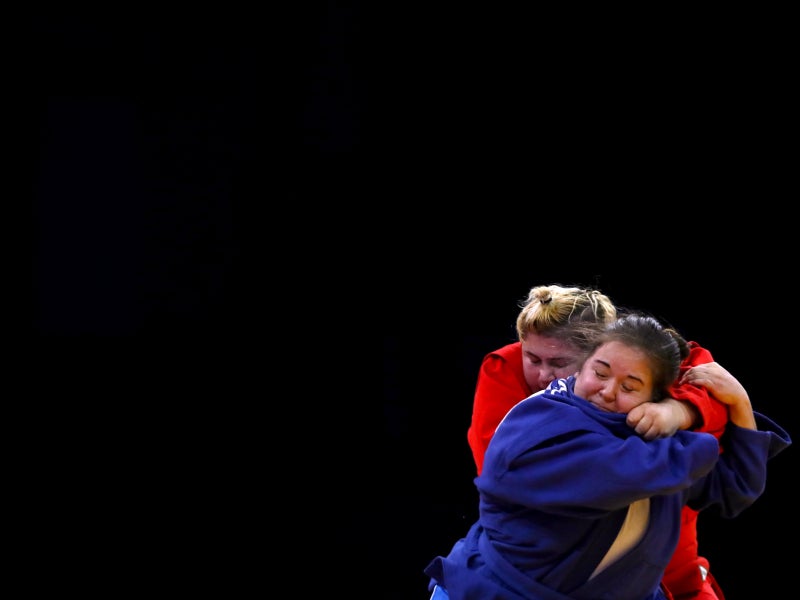
If you’ve ever seen a sports report in a newspaper, you’ve almost certainly seen work from the prolific visual media company Getty Images. Indeed, many people will know the name from its ubiquitous image credits.
Fewer people, however, will know that Getty doesn’t just help to tell stories through its photos and videos but also through the data that sits behind its vast visual media library.
The company was founded in 1995 and for 25 years of its 27-year existence has had a creative insights team responsible for understanding where there are gaps in the content it offers and what visual challenges its customers are facing.
The full launch in June of its VisualGPS Insights tool, designed to “help businesses develop content strategies backed up with data and visual guidance,” can be seen as the culmination of much of the team’s work to date.

Getty’s creative insights director Jacqueline Bourke explains that this is particularly important for sports organizations from the standpoint of inclusivity. Not only do inclusive communications demonstrate that an organization is representational, but they help to speak to audiences effectively at a time when the sports industry is increasingly commercialized and competitive.
“The VisualGPS Insights platform pulls together data around visual appetite to really give us an understanding of what content sports rightsholders or others in the sports industry are looking for,” says Bourke. “We have about 2.3 billion annual searches that my team go through to understand that and how it changes over time.
“We combine this with also understanding what types of content our customers are engaging with on our platform. What are they downloading? What are they using? And, again, it’s my team’s job to go through that and understand the patterns within it.”
This data analysis is supplemented by an ongoing survey of over 7,000 people in 25 countries that are carried out three times a year.
“This is really looking to bring in the consumer sentiment, the sports fans’ perspective, and to understand what they want to see represented in advertising and business communications,” adds Bourke.

One major area into which the creative insights team has delved is the representation of women in sport.
Of this, Bourke says: “What we’re finding is that a majority, around 68% of fans, now really believe that sports organizations and brands should do more to promote women in sport, and almost half are placing overall responsibility on the industry across all types of inclusive sport strategies.”
“We really try to get down to understanding what sports fans and consumers relate to within visual storytelling. How, for example, should you tell stories about female athletes?
“In our latest round of research, we’ve seen that seven in 10 fans would prefer to see female athletes very much portrayed in an authentic way. What we mean by that is that they want to see the representation focusing on their skill and their athleticism rather than their physical appearances, like their beauty, their glamour, or their sex appeal.”

The research in this area has also shown that fans are increasingly keen to see honest conversations around mental health, in particular since the onset of the coronavirus pandemic. Bourke notes that this reflects the visibility of many female athletes leading cultural discussions about mental health since early 2021.
The outputs of the work have included guidelines to help sports organizations create communications and strategies that are both effective and inclusive. These recommendations include defying gender stereotypes, focusing on action‑oriented and not passive women, and showing diversity in roles, ages, ethnicities, abilities, and body shapes.
It has also led to research into other areas like the power of inclusive sport (celebrate togetherness and depict fitness more holistically), puberty and sports (challenge stigmas and taboos and make sport fun), celebrating motherhood in sport (show pregnant women across different activities, not just yoga), LGBTQ+ visibility in women’s sport (visualize intersectional identities, include transgender athletes, show allyship and support), and challenging ageism in sport (raise the inclusivity bar and show a broad spectrum of activities).

Women in sport is only one of a host of areas in which Getty’s creative insights team is working. For instance, its research is showing the increasing importance of technology in sport too.
“We see lots of our customers talking to us a lot more about the metaverse,” notes Bourke. “What that will mean for the sports industry, how that changes – or doesn’t necessarily change but expands – participation strategies and fan engagement.”
These are issues that Getty has focused on itself, but organizations can also enlist it to find out insights about specific audiences or storytelling approaches.
“Sports organizations can either leverage the guidelines that we have – so whether that’s around women’s sport, whether that’s around the LGBTQ+ as a community in particular, whether that’s around disability and our disability collection,” says Bourke.
“Or it’s about having those conversations with us so we can collaboratively work together to really drive much more inclusive visual communications and solutions effectively.”
Images (top to bottom):
Credit: Dean Mouhtaropoulos/Getty Images
Credit: Trevor Williams/Getty Images
Credit: Simon Watts/Getty Images
Credit: Fred Lee/Getty Images
Credit: Catherine Ivill/Getty Images



